Here’s What You Need To Know About Near-Earth Objects
Here’s What You Need to Know About Near-Earth Objects
Our solar system is littered with asteroids and comets, and sometimes they get a little close to Earth. But no need to worry! This happens all the time. When an asteroid or comet could come close to our planet, it’s known as a near-Earth object – aka NEO.
But how close is “close”?

A near-Earth object is defined as an object that could pass by our Earth within 30 million miles. We begin to keep close watch on objects that could pass within 5 million miles of our planet.

To put that into perspective, our Moon is only 238,900 miles away.
However unlikely an impact is, we want to know about all near-Earth objects. Our Planetary Defense Coordination Office maintains watch for asteroids and comets coming close to Earth. Along with our partners, we discover, catalog and characterize these bodies.

But what if one of these objects posed a threat?
We want to be prepared. That is why we are working on several deflection techniques and technologies to help protect our planet.

So next time that you hear of an asteroid passing “close” to Earth, know that it’s just one of many that we are tracking.

Here are 10 more things you should know about Planetary Defense.
Make sure to follow us on Tumblr for your regular dose of space: http://nasa.tumblr.com
More Posts from Nasa and Others
Return to Venus

Japan's Akatsuki orbiter is making a second attempt to enter orbit around Venus today, Dec. 7. A malfunction in 2010 caused the spacecraft to miss its first orbit opportunity. The mission team came up with a plan to try again this week. In honor of Akatsuki, here are a few things you need to know about Venus, physics and other missions to explore our solar system's second planet:
1. Venus Climate Orbiter

The down-to-business names for Akatsuki - which means "Dawn" or "Daybreak" in Japanese - are Venus Climate Orbiter and Planet-C. Akatsuki is Japan's third deep space mission. At Venus, the orbiter will study Venusian meteorology. JAXA defines the mission's goals as:
Observing Venus as a whole to understand its perpetual cloud layer, deep atmosphere and surface
Close observations of cloud structures and convection
Searching for signs of lightning and air glow
2. Exploring Venus

Venus played a key role in early deep space exploration. Our Mariner 2 was the first successful interplanetary mission in 1962. And several Soviet spacecraft have made the tough descent and landing on Venus' hellish surface. HERE is a list of other missions to Venus.
3. All About Venus
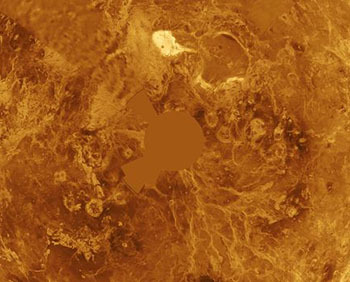
Similar in structure and size to Earth, Venus' thick, toxic atmosphere traps heat in a runaway greenhouse effect. A permanent layer of clouds traps heat, creating surface temperatures hot enough to melt lead. Glimpses below the clouds reveal volcanoes and deformed mountains. Venus spins slowly in the opposite direction of most planets.
4. Sizing Up the Solar System

Venus also played a key role in determining the distance between Earth and the sun - creating the Astronomical Unit, the basic measurement we use to define our place in the cosmos. Many 18th century explorers, including the legendary James Cook, undertook perilous journeys to define the astronomical unit by watching Venus cross the face of the sun.
5. It’s Just a Phase

Like the moon, Venus has phases. It can be full when Venus is on the far side of the sun, new when Venus is between the sun and Earth and a crescent at other points in between. Take a look at Galileo Galilei’s sketches of the phases of Venus HERE.
Follow Along:
As mentioned, Japan's Akatsuki orbiter is making a second attempt to enter orbit around Venus today, Dec. 7. Follow along HERE for updates on this attempt.
Make sure to follow us on Tumblr for your regular dose of space: http://nasa.tumblr.com

Our water-seeking robotic Moon rover just booked a ride to the Moon’s South Pole. Astrobotic of Pittsburgh, Pennsylvania, has been selected to deliver the Volatiles Investigating Polar Exploration Rover, or VIPER, to the Moon in 2023. During its 100-Earth-day mission, the approximately 1,000-pound rover will roam several miles and use its four science instruments to sample various soil environments in search of water ice. Its survey will help pave the way for a new era of human missions to the lunar surface and will bring us a step closer to developing a sustainable, long-term robotic and human presence on the Moon as part of the Artemis program.
Make sure to follow us on Tumblr for your regular dose of space: http://nasa.tumblr.com
Does Webb have resolution to look more closely at nearby objects, like Mars or even Earth? Or just far things?
Spacewalk Recap Told in GIFs
Friday, Oct. 20, NASA astronauts Randy Bresnik and Joe Acaba ventured outside the International Space Station for a 6 hour and 49 minute spacewalk. Just like you make improvements to your home on Earth, astronauts living in space periodically go outside the space station to make updates on their orbiting home.
During this spacewalk, they did a lot! Here’s a recap of their day told in GIFs…
All spacewalks begin inside the space station. Astronauts Paolo Nespoli and Mark Vande Hei helped each spacewalker put on their suit, known as an Extravehicular Mobility Unit (EMU).

They then enter an airlock and regulate the pressure so that they can enter the vacuum of space safely. If they did not regulate the pressure safely, the astronauts could experience something referred to as “the bends” – similar to scuba divers.
Once the two astronauts exited the airlock and were outside the space station, they went to their respective work stations.

Bresnik replaced a failed fuse on the end of the Dextre robotic arm extension, which helps capture visiting vehicles.

During that time, Acaba set up a portable foot restraint to help him get in the right position to install a new camera.

While he was getting set up, he realized that there was unexpected wearing on one of his safety tethers. Astronauts have multiple safety mechanisms for spacewalking, including a “jet pack” on their spacesuit. That way, in the unlikely instance they become untethered from the station, the are able to propel back to safety.

Bresnik was a great teammate and brought Acaba a spare safety tether to use.

Once Acaba secured himself in the foot restraint that was attached to the end of the station’s robotic arm, he was maneuvered into place to install a new HD camera. Who was moving the arm? Astronauts inside the station were carefully moving it into place!
And, ta da! Below you can see one of the first views from the new enhanced HD camera…(sorry, not a GIF).

After Acaba installed the new HD camera, he repaired the camera system on the end of the robotic arm’s hand. This ensures that the hand can see the vehicles that it’s capturing.

Bresnik, completed all of his planned tasks and moved on to a few “get ahead” tasks. He first started removing extra thermal insulation straps around some spare pumps. This will allow easier access to these spare parts if and when they’re needed in the future.

He then worked to install a new handle on the outside of space station. That’s a space drill in the above GIF.

After Acaba finished working on the robotic arm’s camera, he began greasing bearings on the new latching end effector (the arm’s “hand”), which was just installed on Oct. 5.

The duo completed all planned spacewalk tasks, cleaned up their work stations and headed back to the station’s airlock.

Once safely inside the airlock and pressure was restored to the proper levels, the duo was greeted by the crew onboard.

They took images of their spacesuits to document any possible tears, rips or stains, and took them off.

Coverage ended at 2:36 p.m. EDT after 6 hours and 49 minutes. We hope the pair was able to grab some dinner and take a break!
You can watch the entire spacewalk HERE, or follow @Space_Station on Twitter and Instagram for regular updates on the orbiting laboratory.
Make sure to follow us on Tumblr for your regular dose of space: http://nasa.tumblr.com.
Our Answer Time with flight directors Diane Dailey and Chloe Mehring is now scheduled for Dec. 7 at 12 p.m. EST (9 a.m. PST). Join us then to see your questions answered!

What’s It Like to Work in NASA’s Mission Control Center?
In the latest installment of our First Woman graphic novel series, we see Commander Callie Rodriguez embark on the next phase of her trailblazing journey, as she leaves the Moon to take the helm at Mission Control.

Flight directors work in Mission Control to oversee operations of the International Space Station and Artemis missions to the Moon. They have a unique, overarching perspective focused on integration between all the systems that make a mission a success – flight directors have to learn a little about a lot.
Diane Dailey and Chloe Mehring were selected as flight directors in 2021. They’ll be taking your questions about what it’s like to lead teams of flight controllers, engineers, and countless professionals, both agencywide and internationally, in an Answer Time session on Nov. 28, 2023, from noon to 1 p.m. EST (9-10 a.m. PST) here on our Tumblr!
Like Callie, how did their unique backgrounds and previous experience, prepare them for this role? What are they excited about as we return to the Moon?
🚨 Ask your questions now by visiting https://nasa.tumblr.com/ask.
Diane Dailey started her career at NASA in 2006 in the space station Environmental Control and Life Support Systems (ECLSS) group. As an ECLSS flight controller, she logged more than 1,700 hours of console time, supported 10 space shuttle missions, and led the ECLSS team. She transitioned to the Integration and System Engineering (ISE) group, where she was the lead flight controller for the 10th and 21st Commercial Resupply Services missions for SpaceX. In addition, she was the ISE lead for NASA’s SpaceX Demo-1 and Demo-2 crew spacecraft test flights. Dailey was also a capsule communicator (Capcom) controller and instructor.
She was selected as a flight director in 2021 and chose her call sign of “Horizon Flight” during her first shift in November of that year. She has since served as the Lead Flight director for the ISS Expedition 68, led the development of a contingency spacewalk, and led a spacewalk in June to install a new solar array on the space station. She is currently working on development of the upcoming Artemis II mission and the Human Lander Systems which will return humanity to the moon. Dailey was raised in Lubbock, Texas, and graduated from Texas A&M University in College Station with a bachelor’s degree in biomedical engineering. She is married and a mother of two. She enjoys cooking, traveling, and spending time outdoors.
Chloe Mehring started her NASA career in 2008 in the Flight Operations’ propulsion systems group and supported 11 space shuttle missions. She served as propulsion support officer for Exploration Flight Test-1, the first test flight of the Orion spacecraft that will be used for Artemis missions to the Moon. Mehring was also a lead NASA propulsion officer for SpaceX’s Crew Dragon spacecraft and served as backup lead for the Boeing Starliner spacecraft. She was accepted into the 2021 Flight Director class and worked her first shift in February 2022, taking on the call sign “Lion Flight”. Since becoming certified, she has worked over 100 shifts, lead the NG-17 cargo resupply mission team, and executed two United States spacewalks within 10 days of each other. She became certified as a Boeing Starliner Flight Director, sat console for the unmanned test flight in May 2022 (OFT-2) and will be leading the undock team for the first crewed mission on Starliner in the spring of next year. She originally is from Mifflinville, Pennsylvania, and graduated with a bachelor’s degree in aerospace engineering from The Pennsylvania State University in State College. She is a wife, a mom to one boy, and she enjoys fitness, cooking and gardening.
2016 Sets Global Temperature Record
We just experienced the hottest year on record…again.

2016 was hotter than 2015, the previous record. And 2015 hotter than 2014, the previous record year.
These record temperatures are all part of a warming trend that dates back to the late-19th century, largely caused by human emissions of carbon dioxide and other gases into the atmosphere.

A lot of this warming trend has been in the last 35 years. In fact, 16 of the 17 warmest years on record have been since 2001.
To help us gather this data, planes and boats travel out from Antarctic research stations to gather information from the Arctic region, in addition to space-based observatories.
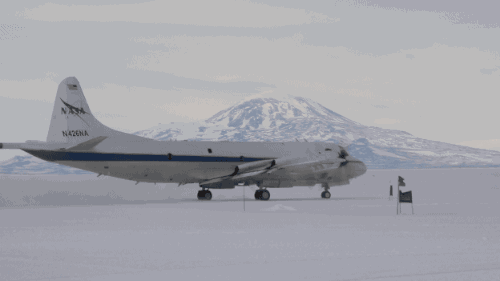
Scientists at our Goddard Institute for Space Studies analyze data from 6,300 weather stations, observations of sea surface temperature and Antarctic research stations, all to determine how the average surface temperature is changing.

Scientists at the National Oceanic and Atmospheric Administration separately analyze the same data to track global temperature.
The two agencies reached the same conclusion about 2016’s record-setting heat.
Variations in local weather mean parts of the globe did not experience a record-setting year. Some places still had snow, cold weather and below-record temperatures, but the overall global average was higher than any previous year.

For instance, according to NOAA the average temperature in the 48 contiguous United States was not quite as high as in 2015, which still holds the record.

A combination of space- and land-based measurements gives us a unique perspective on Earth, the only planet we know of that supports life.
To learn more about the global temperature record or see how average surface temperature for individual months, visit: http://data.giss.nasa.gov/gistemp/
Make sure to follow us on Tumblr for your regular dose of space: http://nasa.tumblr.com
How Do Space Telescopes Break Down Light?
Space telescopes like Hubble and our upcoming James Webb Space Telescope use light not only to create images, but can also break light down into individual colors (or wavelengths). Studying light this way can give us a lot of detail about the object that emitted that light. For example, studying the components of the light from exoplanets can tell us about its atmosphere’s color, chemical makeup, and temperature. How does this work?
Remember the primary colors you learned about in elementary school?
Those colors are known as the pigment or subtractive colors. Every other color is some combination of the primary colors: red, yellow, and blue.

Light also has its own primary colors, and they work in a similar way. These colors are known as additive or light colors.
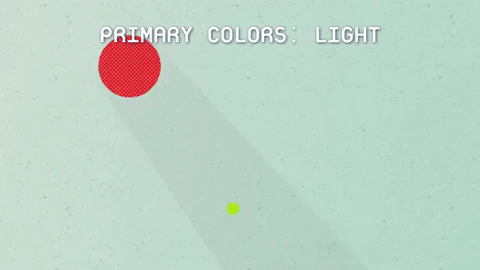
TVs make use of light’s colors to create the pictures we see. Each pixel of a TV screen contains some amount of red, green and blue light. The amount of each light determines the overall color of the pixel. So, each color on the TV comes from a combination of the primary colors of light: red, green and blue.

Space telescope images of celestial objects are also a combination of the colors of light.
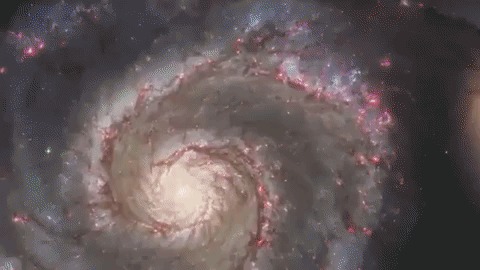
Every pixel that is collected can be broken down into its base colors. To learn even more, astronomers break the red, green and blue light down into even smaller sections called wavelengths.
This breakdown is called a spectrum.
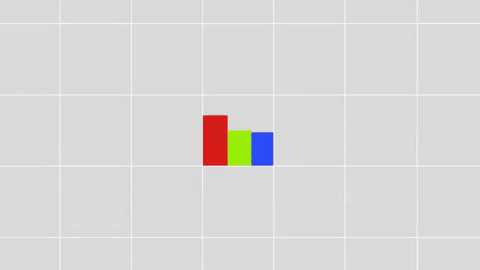
With the right technology, every pixel of light can also be measured as a spectrum.

Images show us the big picture, while a spectrum reveals finer details. Astronomers use spectra to learn things like what molecules are in planet atmospheres and distant galaxies.
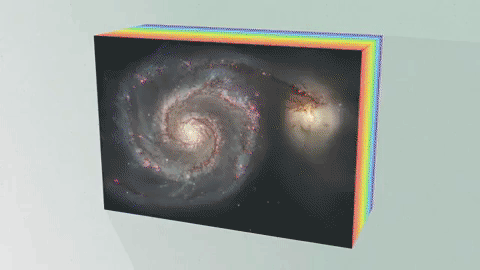
An Integral Field Unit, or IFU, is a special tool on the James Webb Space Telescope that captures images and spectra at the same time.

The IFU creates a unique spectrum for each pixel of the image the telescope is capturing, providing scientists with an enormous amount of valuable, detailed data. So, with an IFU we can get an image, many spectra and a better understanding of our universe.
Watch the full video where this method of learning about planetary atmospheres is explained:
The James Webb Space Telescope is our upcoming infrared space observatory, which will launch in 2021. It will spy the first galaxies that formed in the universe and shed light on how galaxies evolve, how stars and planetary systems are born and tell us about potentially habitable planets around other stars.
To learn more about NASA’s James Webb Space Telescope, visit the website, or follow the mission on Facebook, Twitter and Instagram.
Text and graphics credit: Space Telescope Science Institute
Make sure to follow us on Tumblr for your regular dose of space: http://nasa.tumblr.com.
A Total Solar Eclipse Revealed Solar Storms 100 Years Before Satellites
Just days from now, on Aug. 21, 2017, the Moon will pass between the Sun and Earth, casting its shadow down on Earth and giving all of North America the chance to see a solar eclipse. Remember that it is never safe to look at the partially eclipsed or uneclipsed Sun, so make sure you use a solar filter or indirect viewing method if you plan to watch the eclipse.

Eclipses set the stage for historic science. Past eclipses enabled scientists to study the Sun’s structure, find the first proof of Einstein’s theory of general relativity, and discover the element helium — 30 years before it was found on Earth..
We’re taking advantage of the Aug. 21 eclipse by funding 11 ground-based scientific studies. As our scientists prepare their experiments for next week, we’re looking back to an historic 1860 total solar eclipse, which many think gave humanity our first glimpse of solar storms — called coronal mass ejections — 100 years before scientists first understood what they were.

Coronal mass ejections, or CMEs, are massive eruptions made up of hot gas, plasma and magnetic fields. Bursting from the Sun’s surface, these giant clouds of solar material speed into space up to a million miles per hour and carry enough energy to power the world for 10,000 years if we could harness it. Sometimes, when they’re directed towards Earth, CMEs can affect Earth’s space environment, creating space weather: including triggering auroras, affecting satellites, and – in extreme cases – even straining power grids.

Scientists observed these eruptions in the 1970s during the beginning of the modern satellite era, when satellites in space were able to capture thousands of images of solar activity that had never been seen before.

But in hindsight, scientists realized their satellite images might not be the first record of these solar storms. Hand-drawn records of an 1860 total solar eclipse bore surprising resemblance to these groundbreaking satellite images.
On July 18, 1860, the Moon’s shadow swept across North America, Spain and North Africa. Because it passed over so much populated land, this eclipse was particularly well-observed, resulting in a wealth of scientific observations.

Drawings from across the path of the 1860 eclipse show large, white finger-like projections in the Sun’s atmosphere—called the corona—as well as a distinctive, bubble-shaped structure. But the observations weren’t uniform – only about two-thirds of the 1860 eclipse sketches showed this bubble, setting off heated debate about what this feature could have been.

Sketches from the total solar eclipse of July 1860.
One hundred years later, with the onset of space-based satellite imagery, scientists got another piece of the puzzle. Those illustrations from the 1860 eclipse looked very similar to satellite imagery showing CMEs – meaning 1860 may have been humanity’s first glimpse at these solar storms, even though we didn’t understand what we were seeing.

While satellites provide most of the data for CME research, total solar eclipses seen from the ground still play an important role in understanding our star. During an eclipse, observers on the ground are treated to unique views of the innermost corona, the region of the solar atmosphere that triggers CMEs.
This region of the Sun’s atmosphere can’t be measured at any other time, since human-made instruments that create artificial eclipses must block out much of the Sun’s atmosphere—as well as its bright face—in order to produce clear images. Yet scientists think this important region is responsible for accelerating CMEs, as well as heating the entire corona to extraordinarily high temperatures.

When the path of an eclipse falls on land, scientists take advantage of these rare chances to collect unique data. With each new total solar eclipse, there’s the possibility of new information and research—and maybe, the chance to reveal something as astronomical as the first solar storm.

Learn all about the Aug. 21 eclipse at eclipse2017.nasa.gov, and follow @NASASun on Twitter and NASA Sun Science on Facebook for more. Watch the eclipse through the eyes of NASA at nasa.gov/eclipselive starting at 12 PM ET on Aug. 21.
Make sure to follow us on Tumblr for your regular dose of space: http://nasa.tumblr.com
What exactly is a sun eclipse? Will I be able to see it and if so when from the Netherlands?
The solar eclipse is when the moon is directly in front of the Sun and creates a shadow on the Earth. They happen about once every 18 months. I don’t believe that you’ll be able to see this eclipse from the Netherlands. I think the next one to be in Europe is in 2026. There’s one in Chillie and Argentia in 2019 and another in Antartica in 2021.
3, 2, 1 LIFTOFF! Astronaut Kate Rubins is here answering your questions during this Tumblr Answer Time. Tune in and enjoy. 🚀👩🚀
-
 annawptga liked this · 5 months ago
annawptga liked this · 5 months ago -
 ebbingflows liked this · 2 years ago
ebbingflows liked this · 2 years ago -
 xanerion liked this · 3 years ago
xanerion liked this · 3 years ago -
 asteroidsinspo reblogged this · 3 years ago
asteroidsinspo reblogged this · 3 years ago -
 tabbybards reblogged this · 3 years ago
tabbybards reblogged this · 3 years ago -
 mrclaw61 liked this · 3 years ago
mrclaw61 liked this · 3 years ago -
 lotlod liked this · 3 years ago
lotlod liked this · 3 years ago -
 eithreepi liked this · 3 years ago
eithreepi liked this · 3 years ago -
 thelacey reblogged this · 3 years ago
thelacey reblogged this · 3 years ago -
 thelacey liked this · 3 years ago
thelacey liked this · 3 years ago -
 mahmudtofiq liked this · 3 years ago
mahmudtofiq liked this · 3 years ago -
 wakayume liked this · 3 years ago
wakayume liked this · 3 years ago -
 aestesianobilis reblogged this · 3 years ago
aestesianobilis reblogged this · 3 years ago -
 aestesianobilis liked this · 3 years ago
aestesianobilis liked this · 3 years ago -
 aestheticaadvent reblogged this · 3 years ago
aestheticaadvent reblogged this · 3 years ago -
 aestheticaadvent liked this · 3 years ago
aestheticaadvent liked this · 3 years ago
Explore the universe and discover our home planet with the official NASA Tumblr account
1K posts